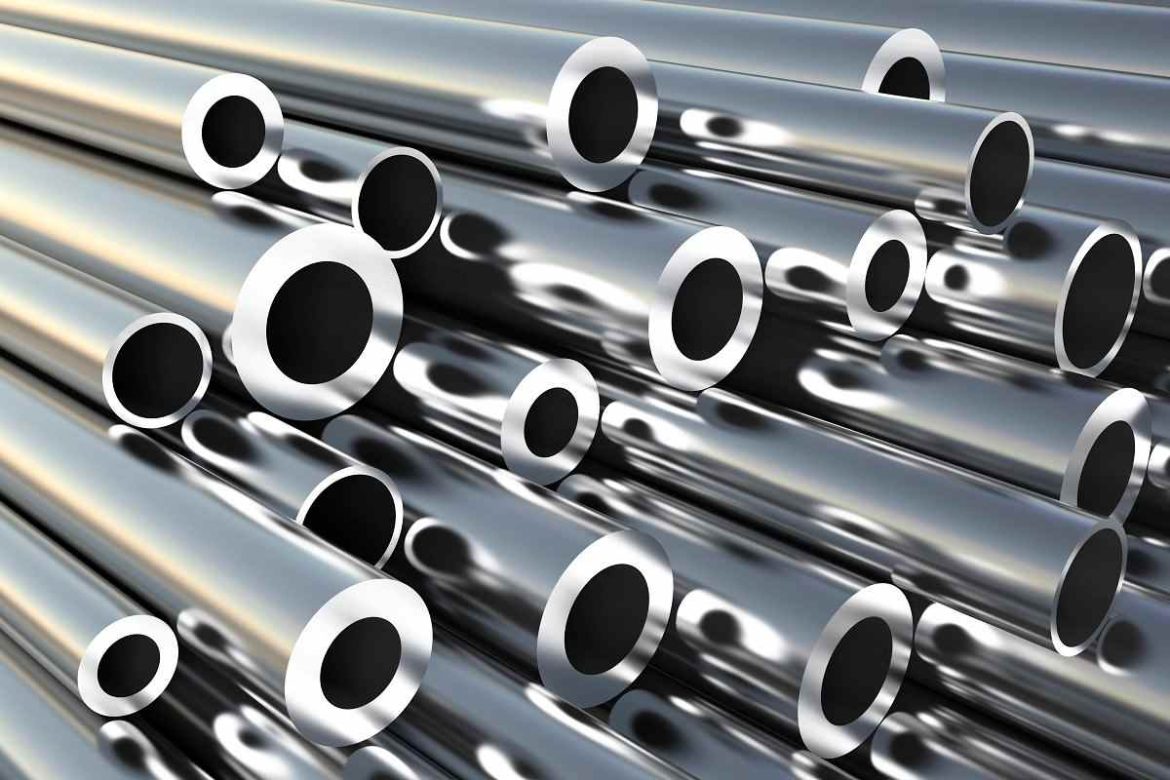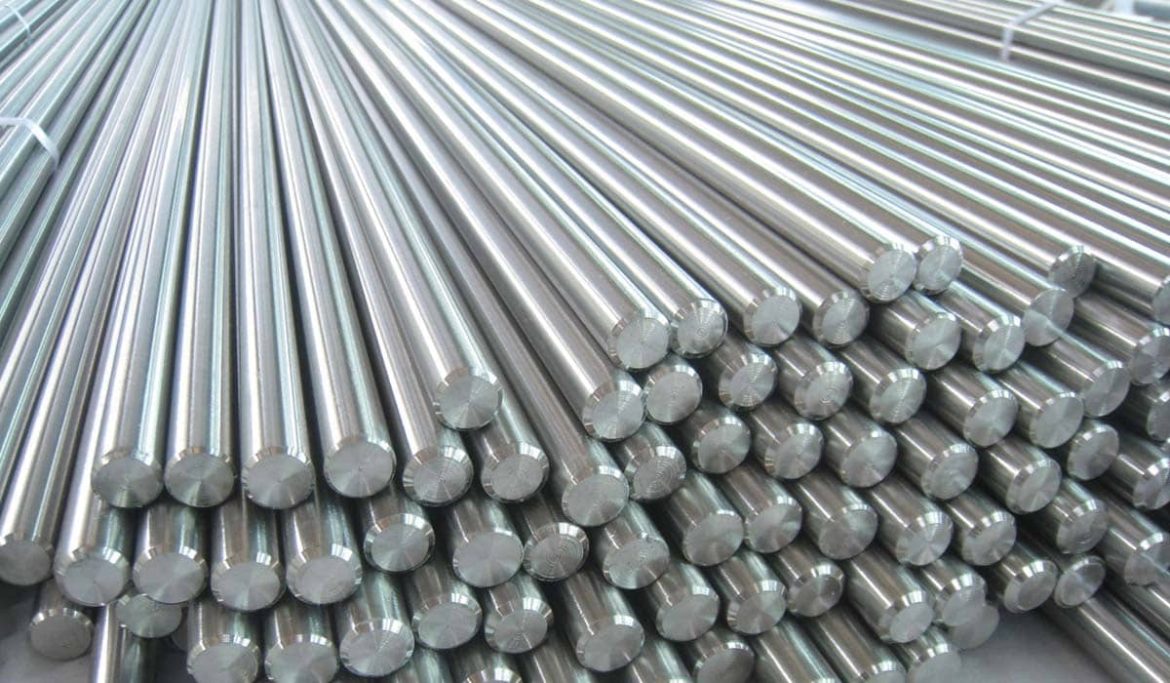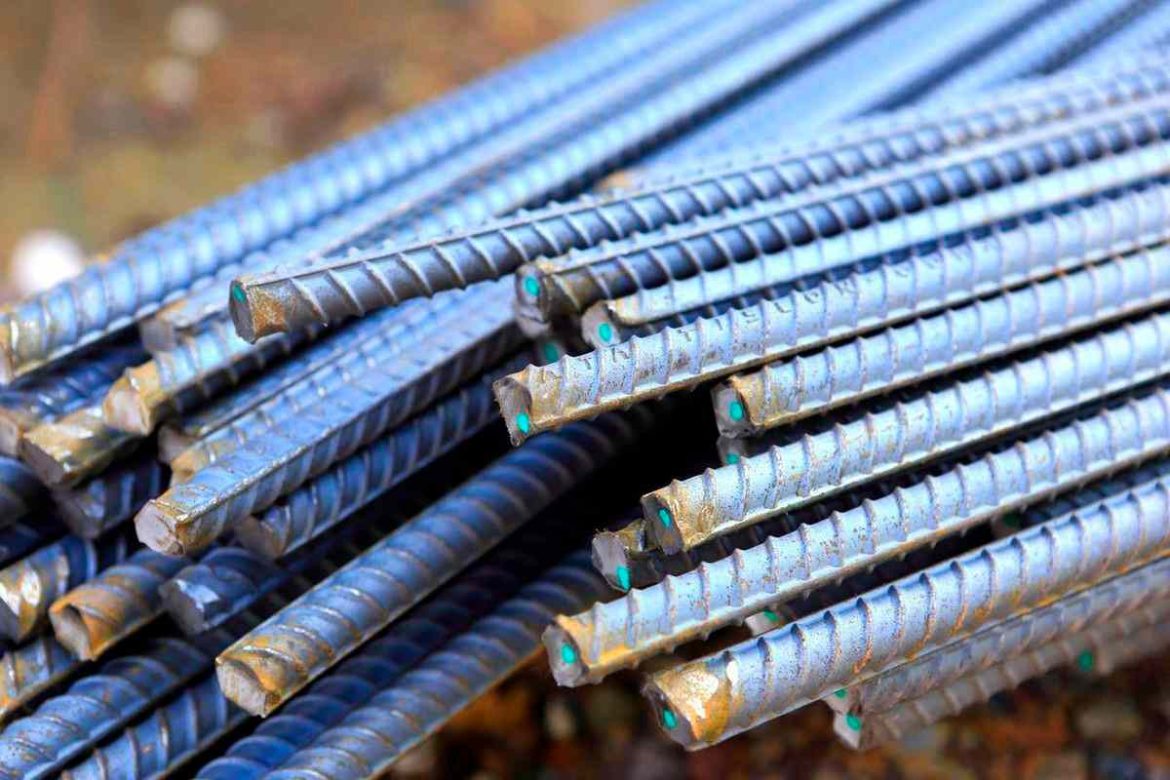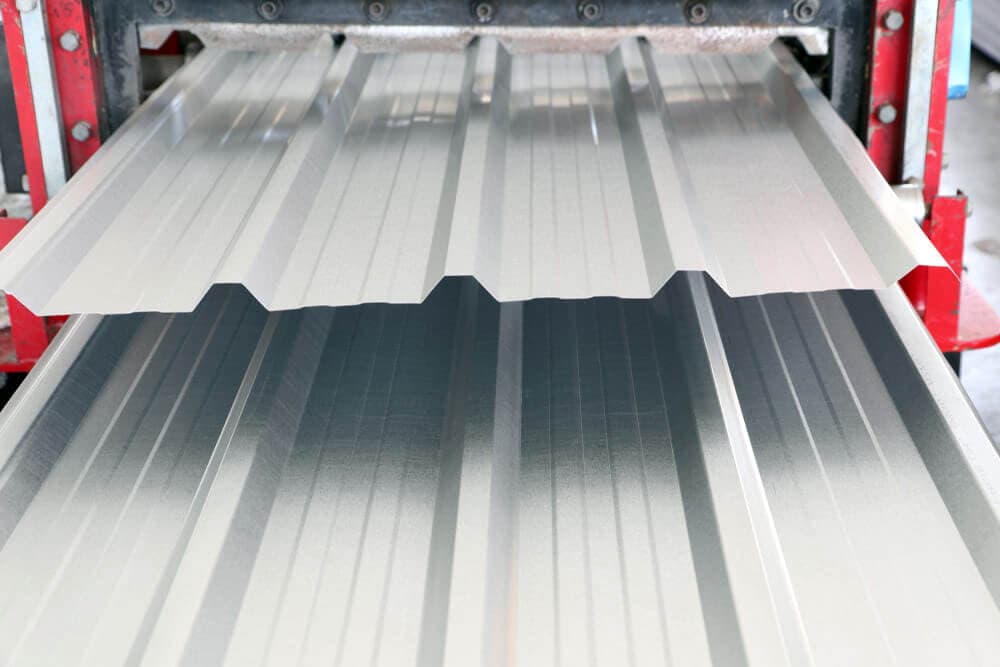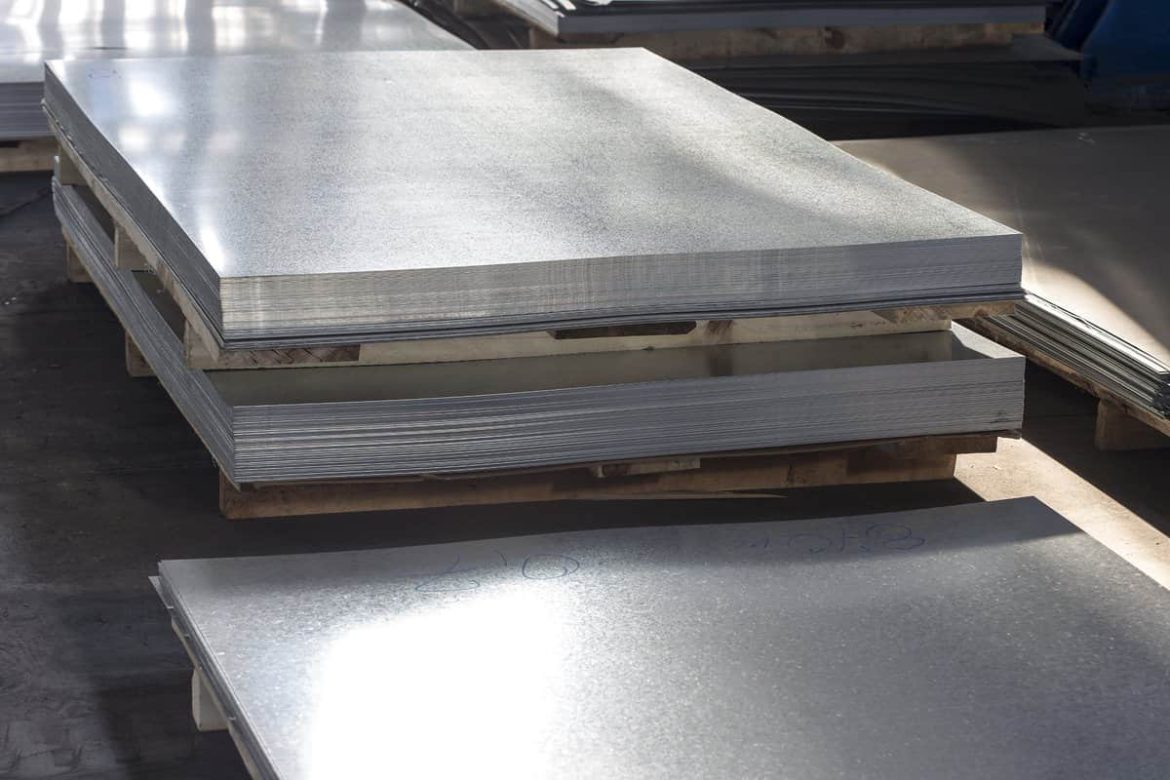Buy and Current Sale Price of Galvanized Steel Sheets
Per standard IS 277 which is the specifications for corrugated galvanized sheets and plain galvanized steel sheets and strips (coils)
The use of trustworthy and high-quality materials is a requirement of the modern building business
Steel sheets with unique protective coatings are among them
As you would guess, we’re talking about galvanized steel sheets
What is a sheet of galvanized steel? An ordinary steel sheet that has been coated with a protective layer of zinc to ward off exposure to the elements and moisture intrusion is known as galvanized steel
One or both sides of the steel sheet can receive this protective coating
The extent to which the galvanized steel sheet will be used, as well as the anticipated level of environmental humidity, may affect the protective coating’s thickness
Galvanizing Techniques The galvanic method uses an electrolyte solution to apply zinc to a metal surface
A metal (often iron or steel) is coated with a zinc layer by being submerged in a bath of molten zinc at a temperature of around 460°C during the galvanizing process
Low-temperature galvanizing involves applying a particular mixture comprising zinc powder to a metal surface
Sherardization is a galvanizing technique that uses either zinc powder (which is processed at high temperatures between 300 and 450°C) or zinc vapor (which is processed at temperatures between 800-900°C)
Zinc spraying is the process of employing a specialized technological pistol to pollinate metal with zinc
Gas-dynamic galvanizing involves using a supersonic jet stream to apply zinc coating
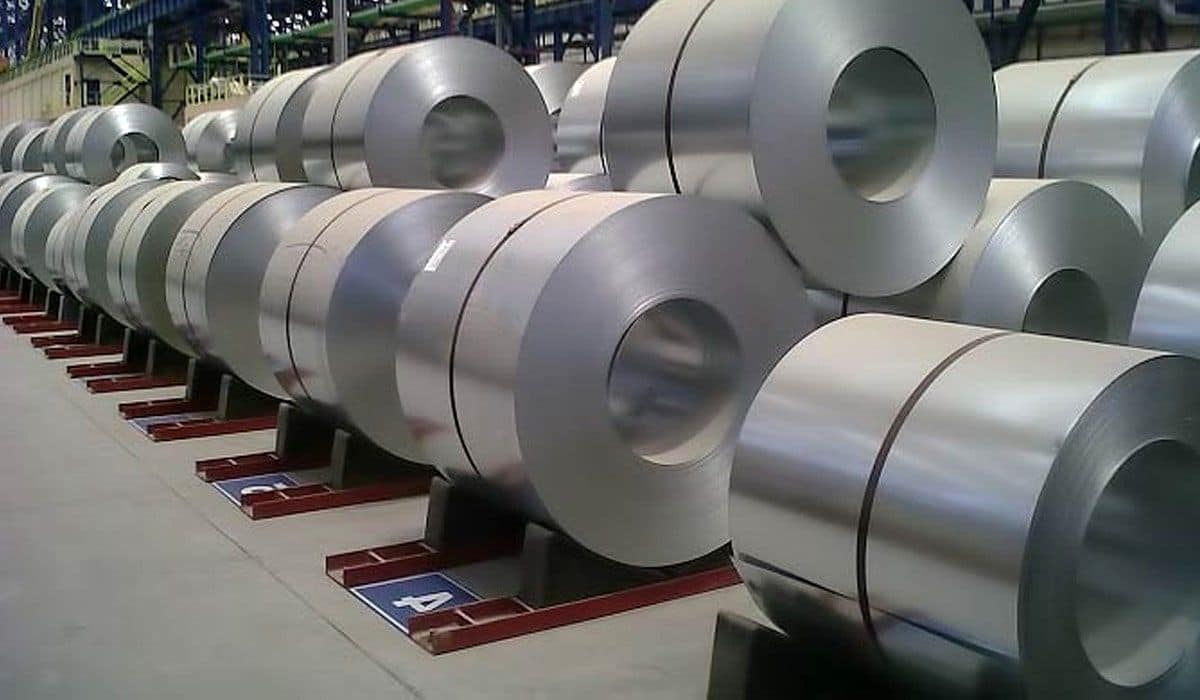
Classification Galvanized product brands and size options are governed by international standards for technical specifications
The primary characteristics for categorizing galvanized sheets are: application domain (metal structure fabrication, cold forming, and profiling); the coating’s chemical makeup (whether it is pure zinc or an alloy like zinc-iron, zinc-aluminum, aluminum-zinc, or zinc-magnesium, for example); The protective galvanized coating’s thickness and weight
Application Galvanized steel sheet is used widely in various manufacturing sectors and industries because of its high tensile strength, simplicity of installation, long lifespan, and resistance to corrosion and harsh conditions
Due to its light weight, galvanized steel sheet is frequently used in roofing
Additionally, this substance forms the foundation for the manufacturing of additional roof and facade components, forced ventilation systems, ducts, gutters, and downspouts, as well as a variety of structural components and parts used in nearly every aspect of industrial and civil engineering construction
Additionally, profiled sheeting, metal tiles, and metal siding are frequently made using galvanized steel sheets
Galvanized steel sheets can also be used to build silos, short-term storage facilities, or agricultural silages
Practically speaking, galvanized steel sheet is utilized in literally every construction we see around us
Examples include ships, airports, train stations, billboards, cars, stairs, cornices, fences, and other metal buildings

Principal Benefits: Galvanized steel provides a number of benefits: extensive working window Ten years must be used at least
The originality of the metal combination
The zinc coating and a metal foundation work together flawlessly
The substance does not rupture, split off, exfoliate, or crack while being used
absolute sensitivity to the surroundings
Because zinc is a natural substance, it does not release any toxic substances
It is therefore usable in home settings
several uses Installation and subsequent repair are simple a pleasing appearance Old galvanized sheets can be reused after being taken apart
When properly disassembled, galvanized sheet retains all of its original technical characteristics and properties
affordable cost Galvanized sheet is regarded as an economical building material
The steps involved in installing galvanized sheet roofing Galvanized Steel Sheet The G
S roof cannot have a slope that is less than 1 vertical to 5 horizontal
One vertical to three horizontal is the typical pitch that should be used
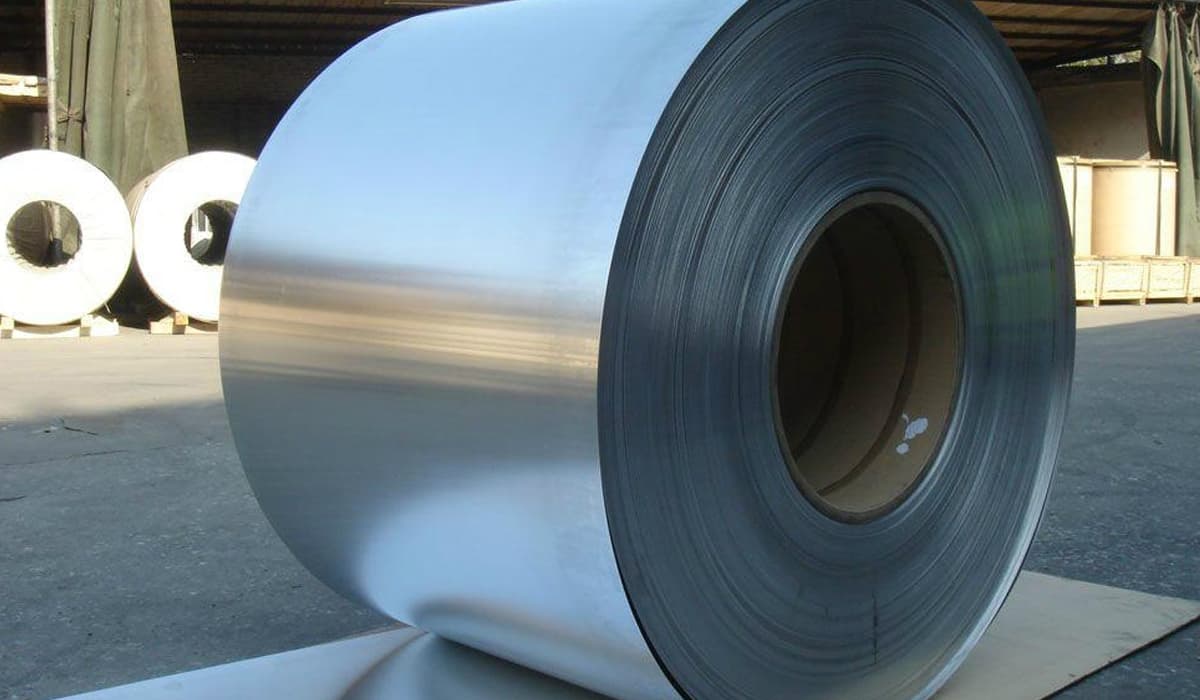
The G
S sheets must be put out with two ridges or corrugations on each side and a minimum lap of 15 cm at the ends
Slopes of one vertical to two horizontal and steeper slopes shall be subject to the aforementioned minimum end lap of 15 cm
The smallest permitted end lap on slopes that are flatter must be 20 cm
A minimum lap of 20 cm must be measured perpendicular to the lines of the ridge, hip, and valley on sheets with those features
Before the G
S
sheets are fastened into position, the overlapping portions must be painted with two coats of approved paint that is appropriate for the G
S
sheet and a coat of acceptable steel primer
The G
S sheets must be fastened to the purlins or other roof components, such as hip or valley rafters, using 8 mm galvanized J or L hook bolts and nuts, bitumen, and G
I
limpet washers, or a limpet washer containing white lead
On every purlin, three minimum hook bolts must be installed, with a maximum separation of 30 cm, at the ridges of the corrugations in each sheet
Along each of the staggered rows, the seam bolt spacing must not be greater than 60 cm
While the sheets are on the ground, the holes for all bolts must be drilled, not punched, in the ridges of the corrugations
Hips and Ridges
The same 8 mm G
I
hook bolts, nuts, bitumen, and G
I
limpet washers must be used to fasten the ridges to the purlins
Similar 8 mm dia G
I bolts must be used to secure hips to purlins
At least one of the fixing bolts must go through the end laps of the ridges and hips on either side
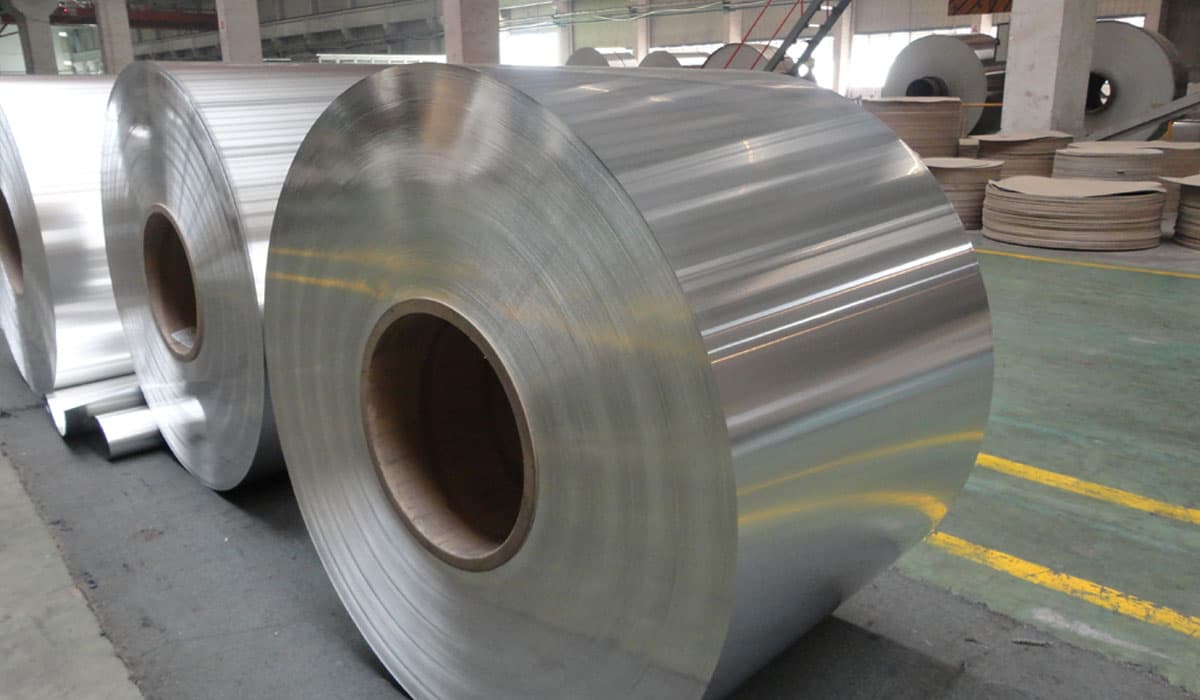
Hip and ridge end laps must be linked together with galvanized iron seam bolts measuring 25 x 6 mm
Before they are set in place, G
I
sheets for the ridge and hip sections as well as the roofing sheets must be painted with a coat of primer and two coats of paint made for G
S
sheets
Valley and Flashing, third With the 8 mm dia
G, fasten the flashing and valley sheets to the purlins and valley rafters
Bolts and its accessories are hooked
At least one of the bolts must go through the opposite side’s valley pieces’ end laps
With masonry, the free end of the flashing must be secured at least 5 cm inside with a 1:3 mortar mix (1 cement: 3 coarse sand)
S
sheets under overlaps must have their surface coated with two coats of certified paint made for G
S
sheets after a coat of approved primer
4
Gutter The gutter must be fixed to and supported by M
S
flat iron brackets that have been bent into the desired shape and fixed to the necessary slope
Brackets must be spaced apart by no more than 1
20 meters
These brackets must be 40 x 3 mm in section and bend to shape before being secured solidly to the sides of rafters with three No
10 mm dia
bolts, nuts, and washers in the designated locations
The connecting bolts must be spaced at 12 cm intervals, and the brackets must overlap the rafter by at least 30 cm
With this configuration, the vertical section of the bracket’s overhang from the face of the purlin shall not be greater than 22
5 cm
A appropriate drop end or funnel-shaped connecting piece constructed of G
S
sheet the same thickness as the gutter and reconnected to the gutter with the other end tying into the socket of the rain-water pipe is required for connection to downtake pipes
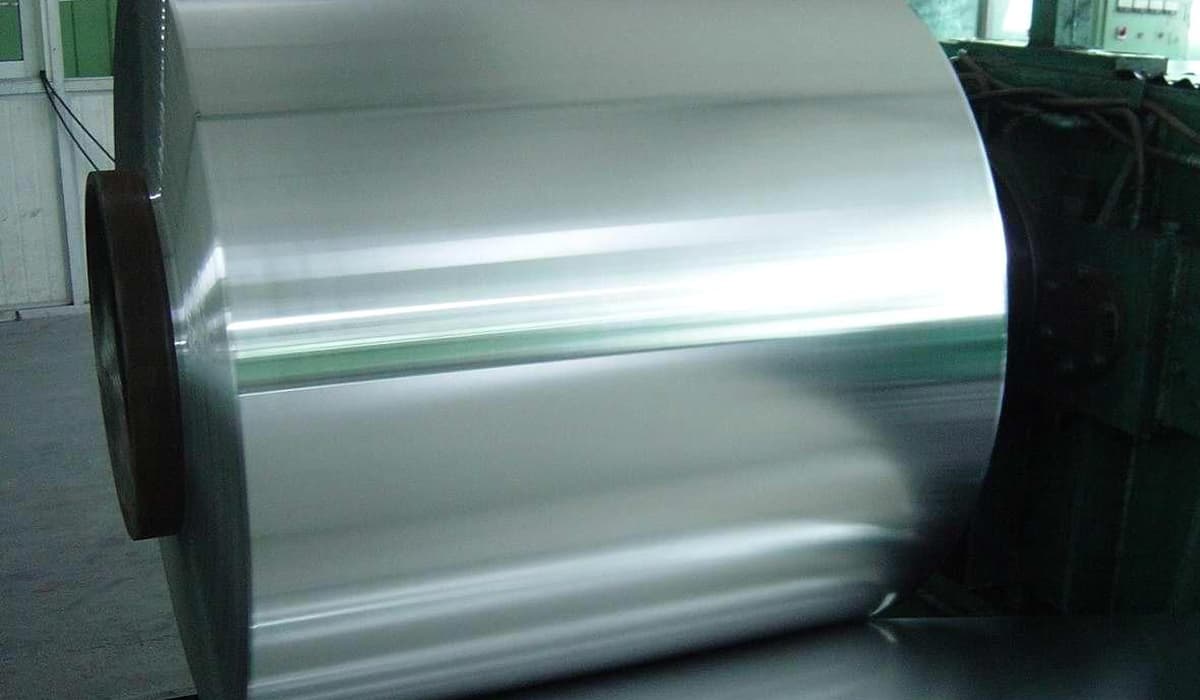
galvanized IS
We use the international standards (IS) for the galvanized steel sheets to our products
They are made in good numbers and at reasonable costs
Galvanized steel is widely utilized in construction due to its increased durability
A longer-lasting product is produced by combining the steel’s strength and malleability with the zinc-iron coating’s ability to prevent corrosion
Zinc shields the steel against corrosive substances while sacrificing the coating itself, resulting in steel that is of superior quality and has a longer lifespan
Due to its adaptability, it may be used in a wide range of contexts, from building and farming to producing solar panels and automobiles
We will do our best to explain how galvanized steel is produced, along with the numerous methods of galvanization, the advantages of these techniques, and the numerous industries that employ galvanized steel, in the paragraphs that follow
The steps that make up the galvanizing process are as follows: The metal was cleaned with a degreasing solution
The steel is cleaned, heated, then diluted sulfuric acid is added to a tank, and the steel is then immersed to pickle it
Following that, the steel is fluxed in a water-based solution (typically zinc-ammonium chloride)
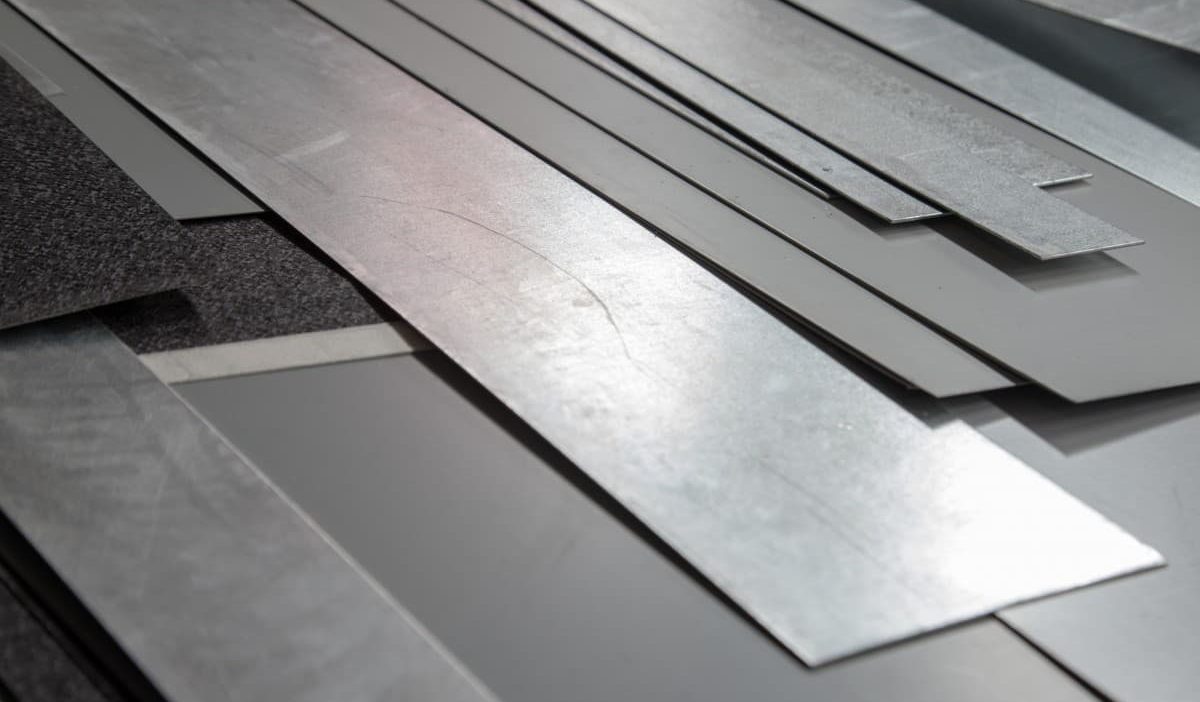
After applying the flux, the steel is submerged in a vat of molten zinc to create a galvanized product
The coated steel is later checked to make sure it is uniform and devoid of any missing pieces
Galvanized steel, one of the most often used steel variants, is durable because it combines the steel’s natural strength and malleability with the corrosion protection offered by a zinc-iron coating
Due to the zinc’s ability to operate as a barrier against corrosion and the fact that the coating itself is lost throughout the process, the steel product that is produced is both long-lasting and of great quality
It can be applied in a variety of settings thanks to its versatility, including agriculture, solar energy, the automotive industry, the building sector, and more
We’ll make an effort to cover all the bases here by outlining the processes used to create galvanized steel, the many galvanization techniques, the benefits of the substance, and its numerous practical applications
The steps in the galvanizing process are as follows: Scrubbing the steel involves using a degreasing solution
The steel is pickled by being immersed in a vat of hot, diluted sulfuric acid after being washed and dried
Following that, the steel is fluxed using an aqueous solution (typically zinc-ammonium chloride)
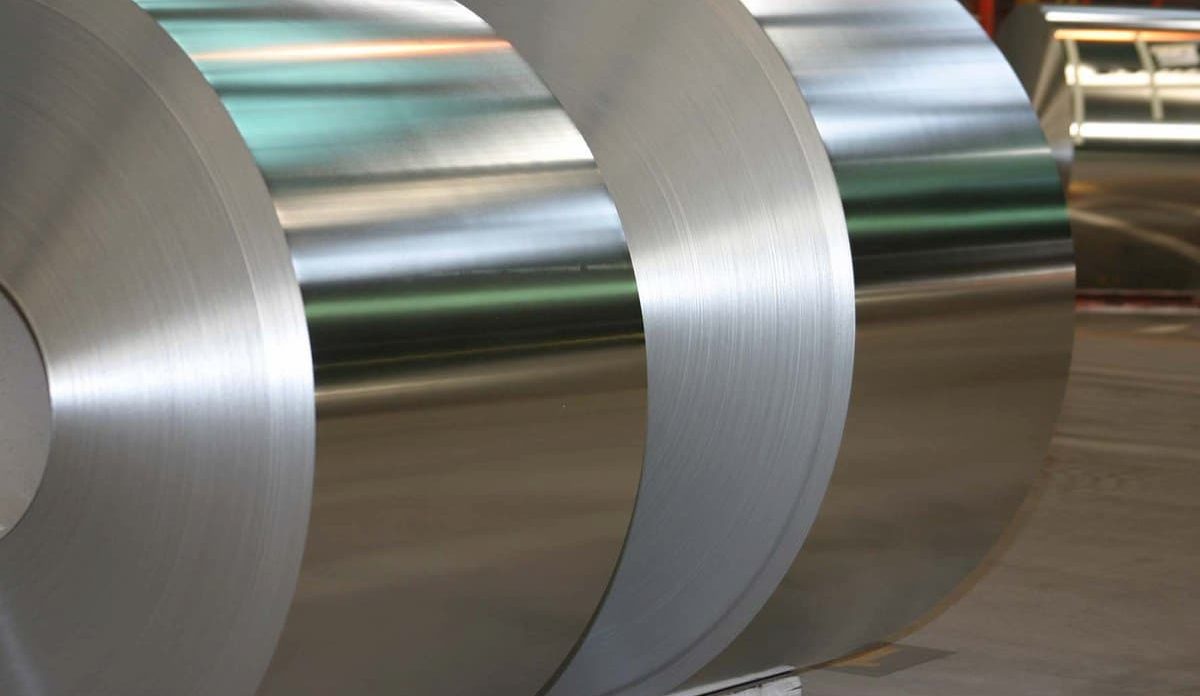
The steel is galvanized by being immersed in a vat of molten zinc after the flux has been applied
After that, the steel’s homogeneity and coating are examined
various forms of galvanization To stop corrosion, a number of alternative galvanization procedures can be applied
Each of these groups has an own set of characteristics and levels of performance
A handful of the numerous galvanizations are detailed in more detail below
Galvanization using the hot-dip method The most popular technique for galvanizing is known as hot-dip galvanization
As the name of the procedure implies, it includes immersing the steel in molten zinc
Usually, the pool of molten zinc is around 860 degrees Fahrenheit in temperature (460 degrees Celsius)
The base metal is cleaned chemically, and then the metal is fluxed to get rid of any remaining oxides
electrolysis-based galvanization This method does not use a bath containing molten zinc, in contrast to the hot-dip method
On the other hand, a passage of electricity passing through an electrolyte solution introduces zinc ions into the metal
Galvannealing The galvannealing process combines the annealing and hot-dip galvanization processes
Using this method, galvanized steel with the desired coating can be produced
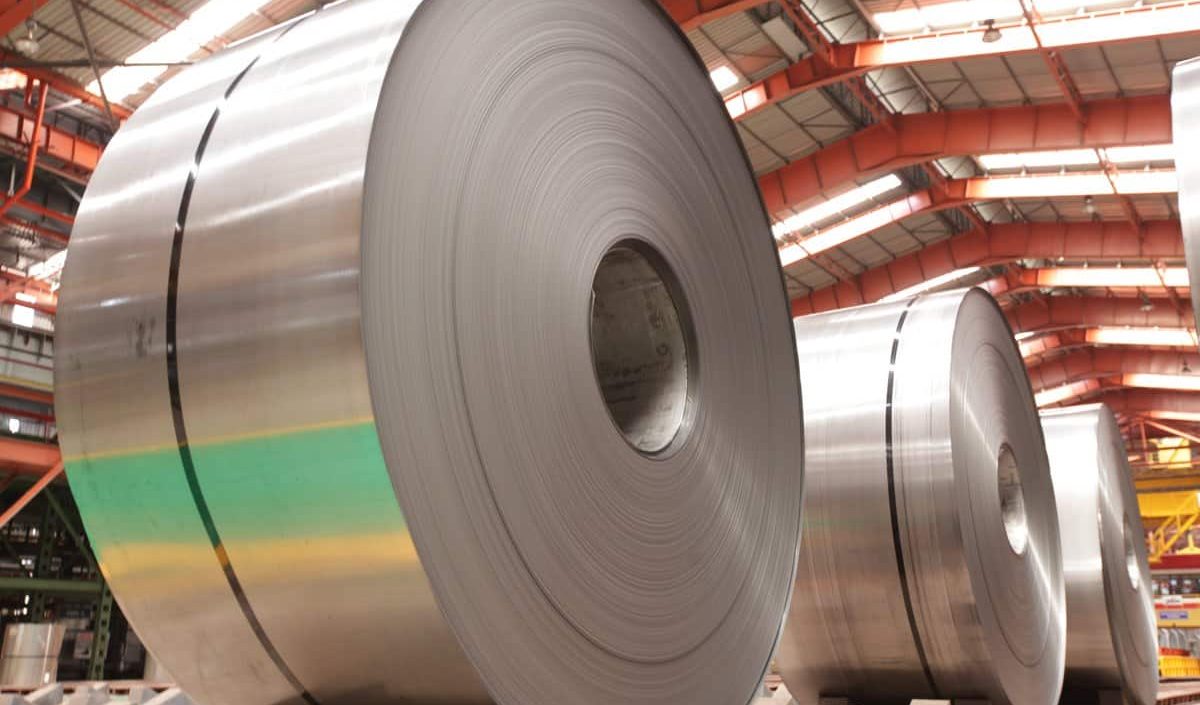
Steel products are produced using a range of unique processes and parts
Steel sheeting is one instance of a good that comes in many different sizes and forms
A size that is 4 feet wide and 8 feet long is one of the most used measurements for steel sheets
You determine the lengths and widths of the components that will be needed after first considering the work you wish to execute
Prices of finished steel products are influenced by the cost of production, which is established by the costs of raw materials, steady demand, and global price movement in raw materials, freight, and finished goods
The cost of final steel products is impacted as a result
We may calculate the costs of production related to the energy needed by assuming that an electric arc furnace uses just electricity to power the process and that the manufacturing of pig iron and the basic oxygen furnace are powered by coal or natural gas
This will make it possible for us to estimate the cost of making pig iron and a basic oxygen furnace
The amount of fuel used, which goes toward the overall cost of producing pig iron, is greatly influenced by the volume of production, the level of maintenance required, the control and monitoring capabilities, as well as the blast parameters
This factor is influenced by the blast furnace’s size and design, respectively
The amount of pig iron produced, which is directly inversely proportional to the amount of pig iron required by steel factories, is another crucial factor





